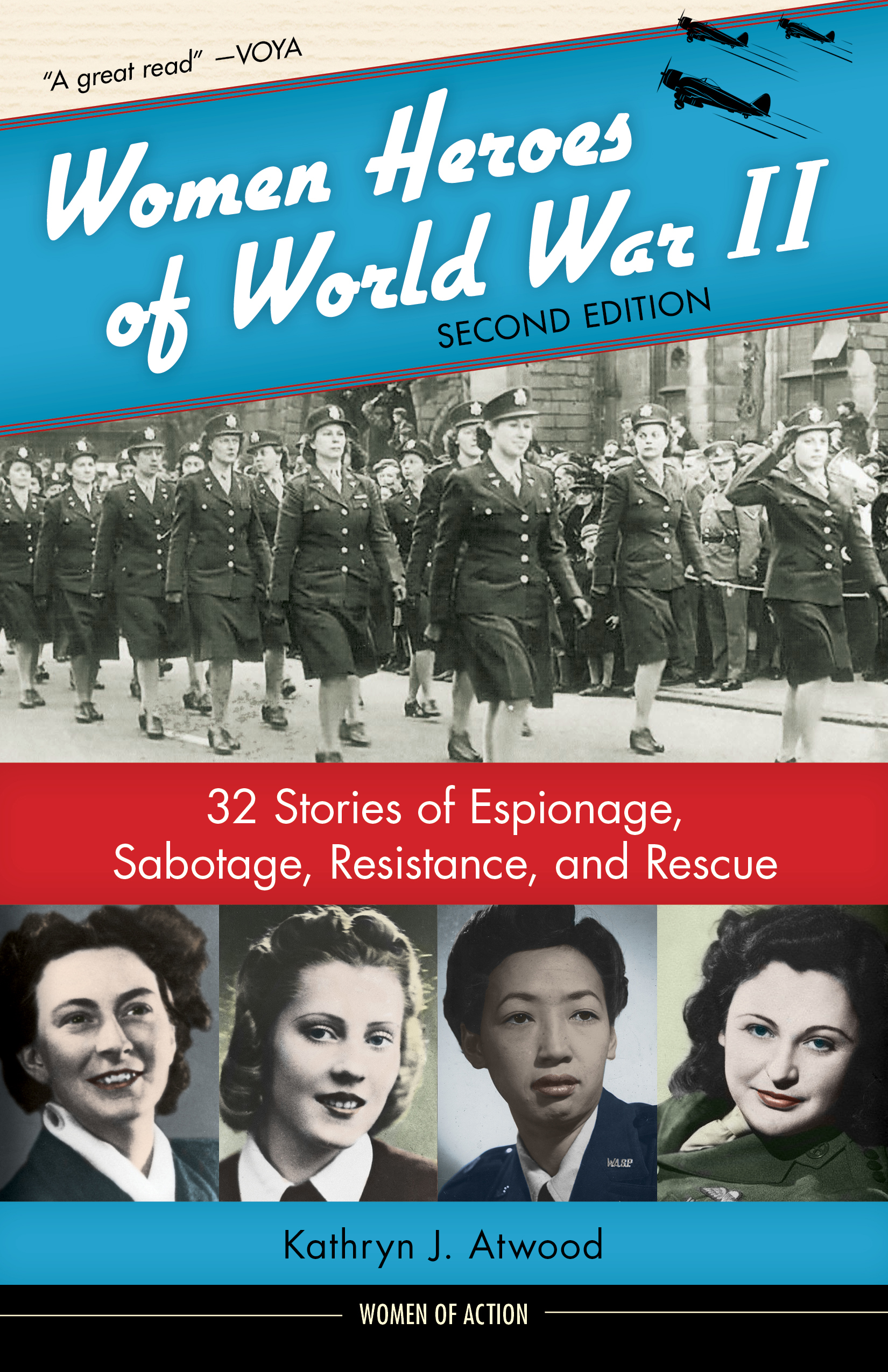In our interview with author Kathryn Atwood, she reveals her process for writing the second edition of Women Heroes of World War II and what she hopes readers will take away from her books. Read below to learn more!
“Atwood’s admiration and enthusiasm for her subjects is apparent in these engaging profiles, and readers will likely be inspired to investigate these fascinating women further.” —Kirkus Reviews on the first edition

The first edition of Women Heroes of World War II was published in 2011. The second edition features six brand new stories of resistance organized by women from around the world during World War II. What was your process for choosing which women to feature and what angles to approach their stories from?
I was originally writing for my own undermotivated 12-year-old self, very young for my grade but an avid reader. How could I persuade this type of young person to read a history book? By finding the most compelling stories of women who made a significant contribution to the war effort, then arranging the facts of each story to sustain interest to the end.
Whose story surprised or inspired you the most while writing Women Heroes of World War II?
All of these women inspired me profoundly but I’d have to nominate German resister Sophie Scholl for the top award.
How was your writing process different from the first to second edition?
I spent most of 2009 writing the first edition and a few months in 2018 writing the material for the second, with four books in between. It’s impossible to become completely acclimated to stories like these but writing that first edition nearly knocked me off my feet with admiration.
What do you hope kids (and adults) take away from reading this book?
To perhaps rethink their definition of the word hero. This book features ordinary women whose conscience wouldn’t allow them to do anything less than risk their lives to withstand a cruel totalitarian regime.
I’d also like to let readers know that this book is in no way to be seen through a contemporary political lens. Monica Wichfeld was a wealthy landowner who worked with a Communist in order to defeat the Nazis in Denmark. The Dutch section contains the story of a Communist (Hannie Schaft) and an evangelical Christian (Corrie ten Boom), both of whom worked successfully against the Nazi occupation of the Netherlands. Motivations and actions, not necessarily political ideologies, make one good or evil.
What five people—living, dead, fictional or nonfictional—would you have over for a dinner party and why?
If we limit the guest list to the women I wrote about, I would enjoy seating Pearl Witherington and Nancy Wake together. They both did phenomenal work in the same general area of France, but they never met, which is possibly a good thing since they were polar opposites: the no-nonsense leader vs. party girl weapons trainer.
Another interesting pair might be Edith Cavell and Gabrielle Petit, two women separately involved with resistance work during the First World War who were executed by German firing squads in Brussels within months of each other. Cavell was as cool and reserved as Petit was emotional and outspoken, so it would be fascinating to see if (or how quickly) they could find their common ground.
For my final guest, I would invite one of the war correspondents. Most of the journalists featured in my books chronicled how war affected ordinary people, so I’d love to see what Mary Roberts Rinehart, Martha Gellhorn, Peggy Hull, Dickey Chappelle, Tracy Wood, Kate Webb, or Jurate Kazickas would make of the interactions at my table.
No Comments
No comments yet.